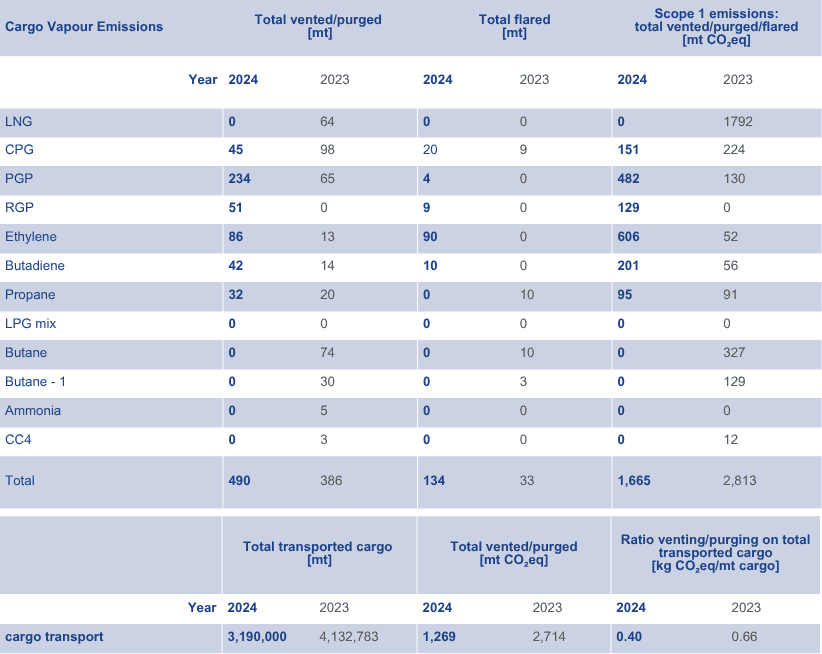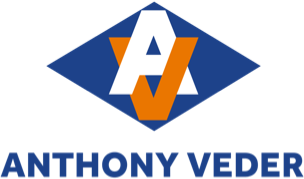
Sustainable growth report 2024
Sustainable growth report 2024
CARGO VAPOUR EMISSIONS
As noted in last year’s report, purging remains a critical operation for our business due to factors such as drydocking, yard stays, and changes in cargo grades, all of which significantly impact the frequency of purging activities.
In 2024, the number of purging operations increased from 32 in 2023 to 39, primarily driven by five additional docking operations compared to the previous year.
A noteworthy distinction from last year’s data is the absence of LNG venting, which previously had a considerable influence on overall GWP figures. While this shift in the number of LNG operations is influenced by market dynamics, managing LNG venting continues to be a priority, particularly during gassing-up and cooling-down operations.
An excellent example of innovation in this area is demonstrated in the cooldown operation on Coral Favia, where liquid nitrogen was employed as an alternative to the conventional LNG cooldown method.
We maintain close collaboration with charterers in the petrochemical market to secure approval for ships with optimised cargo tank conditions upon arrival. This process helps to minimise venting and reduce overall emissions.
The commercial department plays a key role in ensuring vessels are approved to transport various types of cargo with differing prior cargo contents.
Progress
Although progress in identifying new solutions has been slower than anticipated, we remain committed to exploring advanced technologies and improving operational practices.


